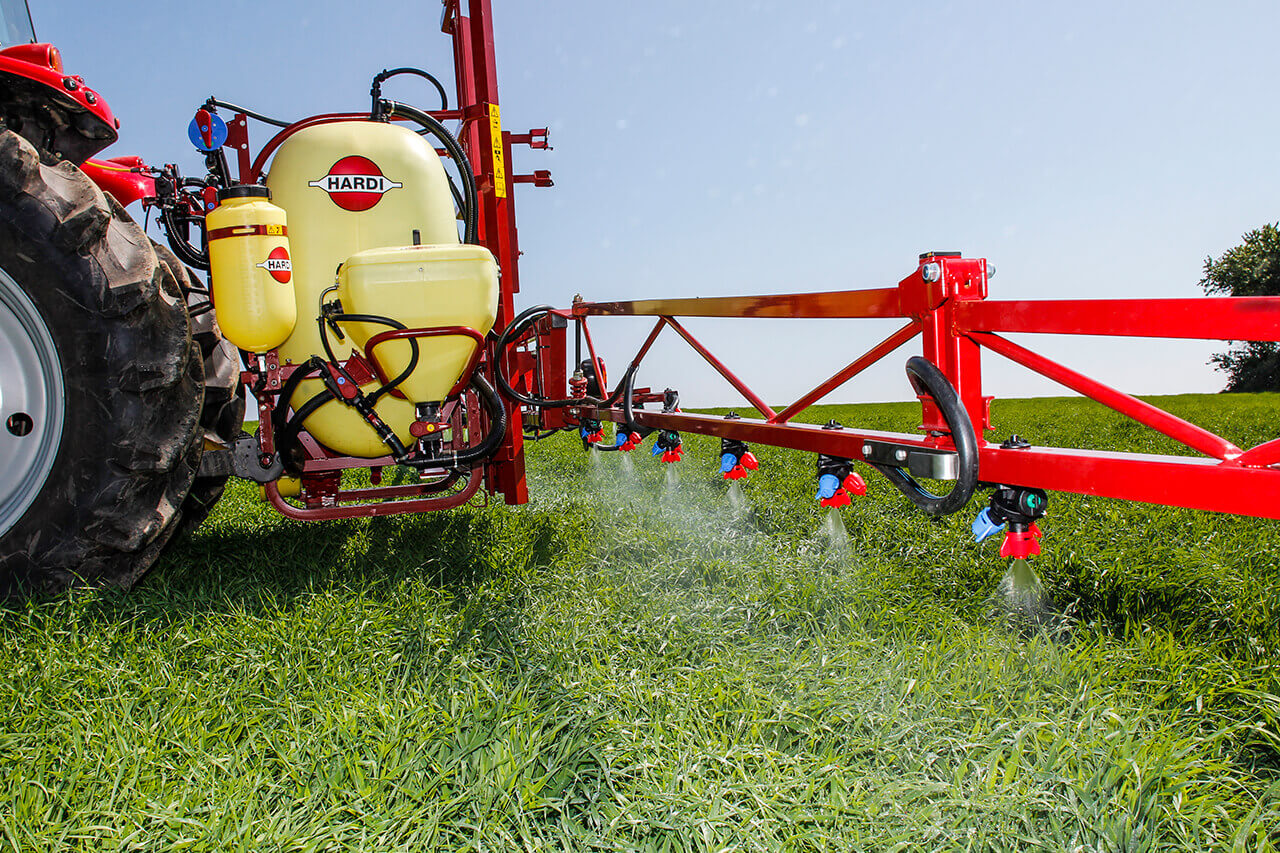Replace the Spinner with a Sprayer?
 This article is taken from some interesting work that was done by EIP Wales. I think that under the current trend of high fertilizer prices it is very topical.
This article is taken from some interesting work that was done by EIP Wales. I think that under the current trend of high fertilizer prices it is very topical.
Most nitrogen (N) fertilisers are applied to grassland systems in solid prill form. The nutrients are washed into the topsoil by rain and subsequently taken up by the roots of the plants. A host of factors such as soil compaction, drainage, bioactivity, soil temperature, dry or wet weather can affect the nutrient release and uptake by the grass with this method with some N lost to the atmosphere as Ammonia.
There is another, more direct, method of getting nitrogen into the grass which is through the pores in the leaves. Previous trials have proven that foliar feeding, applied as a spray, can decrease the amount of total nitrogen applied while maintaining dry matter yields and minimising nitrogen losses through runoff.
The project
This EIP Wales project looks at the extent to which using a foliar feed, based on urea and humic acid, can reduce the application of conventional N fertiliser to the soil while maintaining dry matter (DM) yield. Four farmers in Pembrokeshire are taking part in the trial. They have split one large field into three sections of equal size with the following treatments.
-
Standard prilled nitrogen (N) application (125 kg/Ha of product).
- Foliar feed, at three-week intervals during the grazing season (20 kg/Ha of product).
- Control of no nitrogen.
The dry matter yield and the N content of fresh grass was measured using a plate meter during the grazing season (March – October). At the end of each season, the costs of N application will be calculated per tonne of DM, for each of the three treatments. Clover assessments at the beginning and end of the project will allow us to assess the impact on species composition of the sward.
Results so far: -
- The foliar feed plots grew 0.5 – 1.0 tons dry matter more than the conventional paddocks up to the end of April, indicating faster early growth.
- By the end of the season, the conventional paddocks had overtaken the foliar feed paddocks, growing 1-2 tons more. This was expected as by early August, up to 75% more nutrients were applied onto conventional paddocks.
- All 4 sites showed the same pattern. Yield was highest in conventional paddocks, lowest in the ‘No fertiliser’ plots and approximately midway between the two on the foliar fed paddocks.
- The overall difference in dry matter yields also reflects the difference in site location with sites going from 100 feet and south facing to 900 feet and being north facing
- While yield was highest in conventional plots, increase in DM yield (compared to no fertiliser) per Kg of additional N applied was more than double in foliar feed compared to conventional fertiliser paddocks (Table 1), suggesting that while yields are lower in foliar fed paddocks, N usage is at least 100% more efficient.
 Table 1 - Increase in yield per Kg N applied compared to the control of no fertiliser.
Table 1 - Increase in yield per Kg N applied compared to the control of no fertiliser.
This is a very interesting trial, the downfall is you need a sprayer, but if you have one then sell the spinner!
If you require any further information, please contact Mark Yearsley on 07984 785190 or e-mail markyearsley@fcgagric.com
Recent Articles
- Do You Know the Benefits of a Health and Heat Detection System?
- Have you Ordered Your Silage Inoculant?
- Growing More Grass With Less Nitrogen, Where Do I start?
- A Real Recognition of The Importance of Food Security or Simply A Reconciling of DEFRA Budgets?
- Silage Sheet Prices Available!
- Are Your Cows at Risk of Grass Staggers?
- Feed Late Afternoon and Calve in Daylight Hours!
- Q Fever
- Aerating Your Soil Without A Machine? – Gerard Finnan
- Why Are You Not doing a Soil Management Plan?

